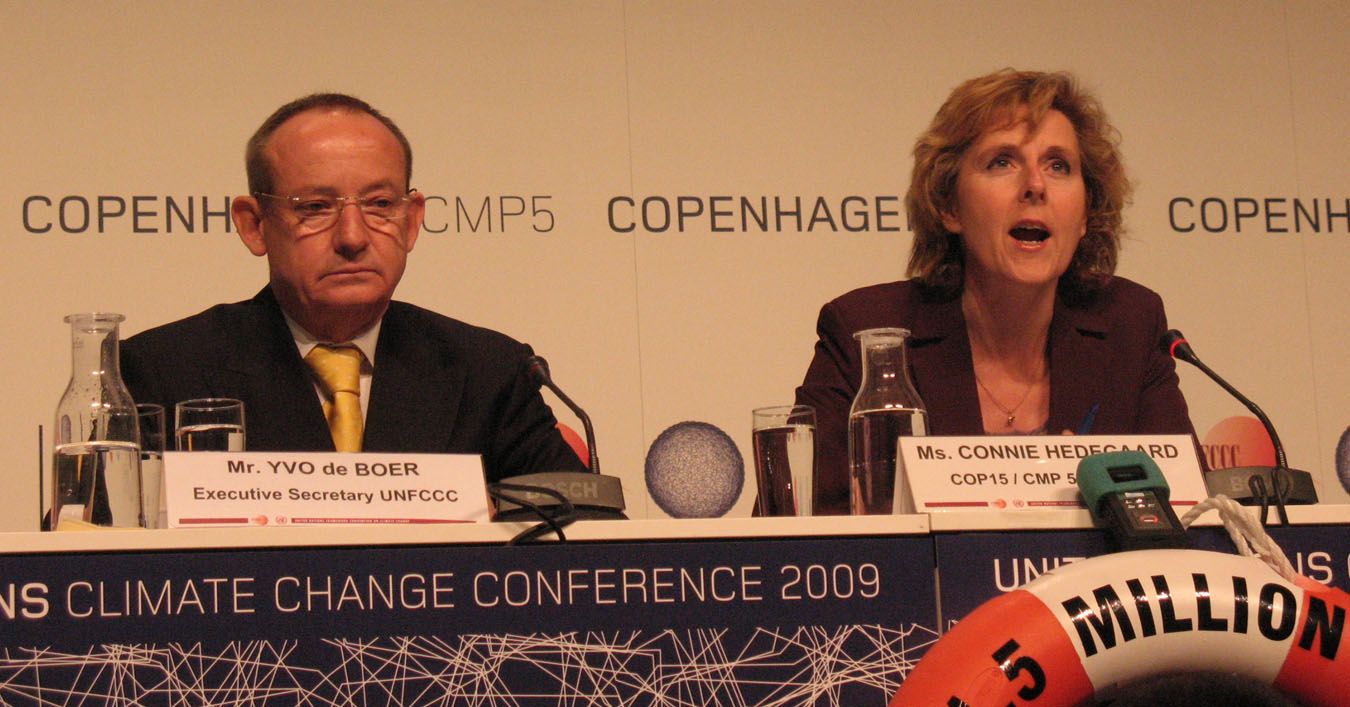Climate: Negotiating the brackets
COPENHAGEN Representatives of 193 nations are posturing and challenging, threatening and bluffing, as they wrestle to draft a successor climate treaty to the Kyoto Protocol. The chief objective is to lower global emissions of greenhouse gases. How to do it, who will pay for it, how high to strive – all of these are up in the air. Still. Three days before the negotiators are to sign onto a statement of shared goals and intentions.
There can be no hold-outs because this process depends on consensus. All MUST agree. So where are we?
Well, there has been big progress in the past day, according to Connie Hegegaard. She’s the former Danish energy and climate minister and president of this climate change conference – formally known as the COP, for Conference of the Parties. And that progress was? Yesterday, “We actually managed to get ministers down to work. We had now many ministers, heads of delegations, consulting on five issues.” And “they have been very busy, late into the night — some of them into the very late night,” she said at a lunch-time briefing for reporters.
Added Yvo de Boer, the United Nation’s top climate official, “I fully agree that we are at a very interesting and important moment in the process. We’ve seen progress in a number of significant areas – but we haven’t seen enough yet.”
Interesting how they danced around what the real issues – hang-ups – are. And you only need glance at the draft documents that negotiators are haggling over to see why. The documents are riddled with bracketed phrases – all passages currently in dispute.
Consider, for instance, the following portions of something known as the “Chair’s Proposed Draft Text on the Outcome of the Work of the Ad Hoc Working Group on Long Term Cooperative Action under the Convention.” It says that the COP – or negotiating countries – agree that to strengthen the upcoming treaty’s implementation, “the Parties’ shared vision, including a long-term global goal for emission reductions, shall guide and enhance the full, effective and sustained implementation of the Convention in a balanced and comprehensive manner by addressing mitigation, adaptation, technology development and transfer, financing and capacity-building in an integrated manner.”
Then it goes on to say: “Accordingly:
(a) Parties shall cooperate to avoid dangerous climate change, in keeping with the ultimate objective of the Convention, recognizing [the broad scientific view] that the increase in global average temperature above pre-industrial levels ought not to exceed [2 oC][1.5 oC];
(b) Parties should collectively reduce global emissions by at least [50] [85] [95] per cent from 1990 levels by 2050 and should ensure that global emissions continue to decline thereafter:
(c) Developed country Parties as a group should reduce their greenhouse gas emissions by [75–85] [at least 80–95] [more than 95] per cent from 1990 levels by 2050;
That was just one small part of a seven page document. Even in this barebones outline of elements for a treaty, big divisive issues still await resolution. In some areas, bracketed phrases are simply place holders for elements yet to be fleshed out. Scads of them.
Such as how the treaty would “mitigate” aspects of a changing climate. It says the treaty-to-be would create a forum to address impacts of climate-response measures, which it outlines as
30. [To be elaborated: various approaches, including opportunities to use markets, to enhance the cost-effectiveness of, and to promote, mitigation actions;]
31. [To be elaborated: general aspects of cooperative sectoral approaches;]
32. [To be elaborated: policy approaches and measures to limit and reduce greenhouse gas emissions from aviation and marine bunker fuels;]
33. [To be elaborated: agricultural programme;]
34. [To be elaborated: near-term opportunities for mitigation;]
Clearly, in the next 48 hours, the negotiators have to some serious compromising to work out, because the whole event is due to end Friday. Probably late, if previous climate conferences are any guide.
And Hegegaard dismisses the idea of just picking up the negotiating over lingering brackets at some later date. “We must bring this [negotiating] to an end — or it could continue endlessly,” getting ever more complicated at each successive COP. No, she said. It must conclude.








